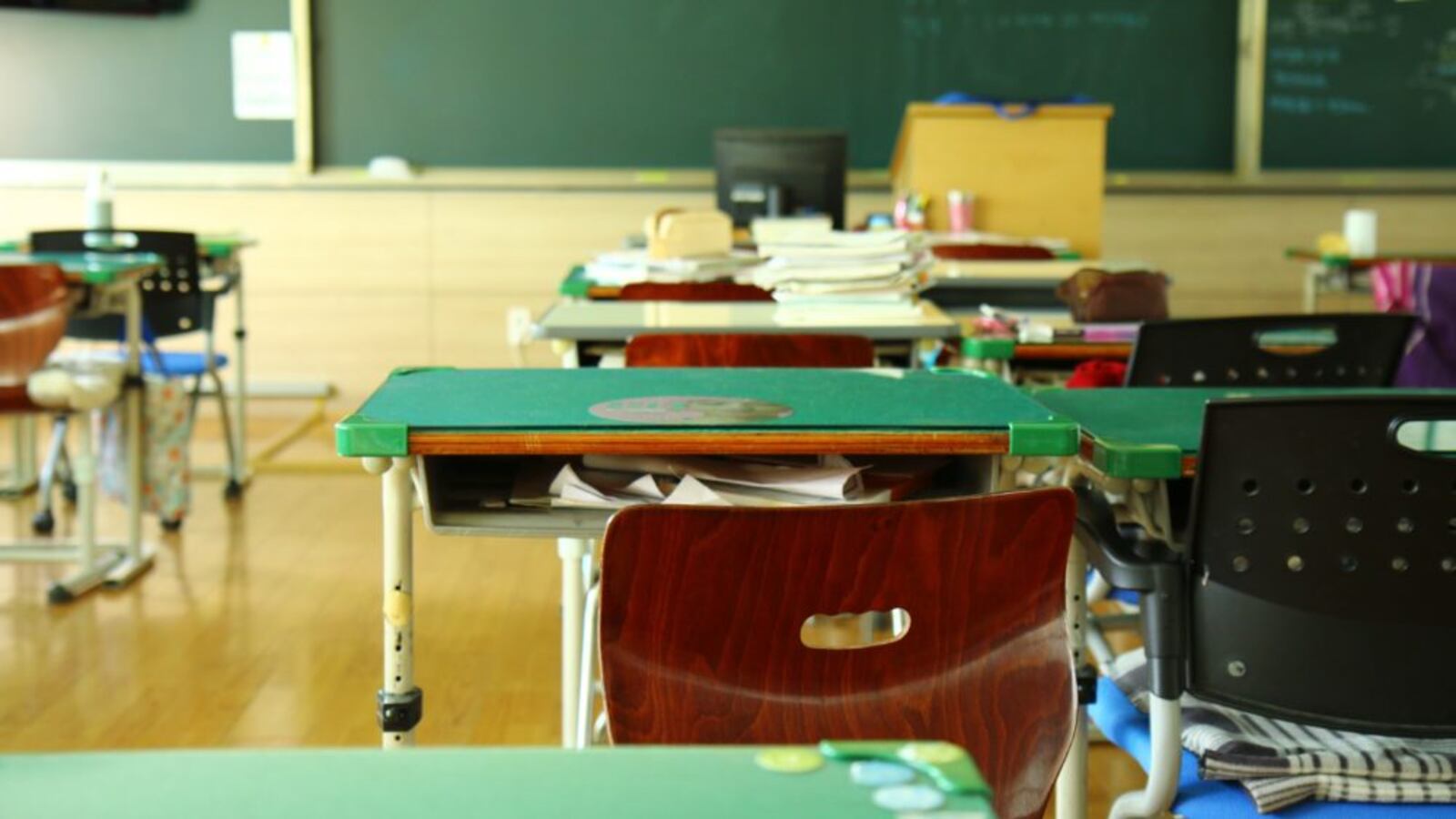A new report on teacher shortages in Michigan points to the state’s “leaky” teacher pipeline as a factor contributing to the difficulties many school districts — including in Detroit — are experiencing filling teaching jobs.
One of the biggest conclusions out of the report, released Tuesday morning by the Citizens Research Council of Michigan, is that the state isn’t doing enough to study the problem or provide solutions.
The report, authored by research director Craig Thiel, says that while there currently isn’t a statewide teacher shortage, the research “does document some troubling trends along the teacher pipeline that are likely contributors to the challenges local schools face filling certain classroom vacancies.”
Here are some highlights from the research council’s report, including some policy suggestions they made (see the full report below):
Who wants to be a teacher?
Declines in the pipeline of people going into teaching is contributing to shortages. Between 2008-09 and 2015-16, enrollment at teacher preparation programs — which train people to become teachers — in Michigan was down 66 percent, according to the report. Meanwhile, the number of people completing a teacher preparation program declined 30 percent from 2010-11 to 2015-16.
A separate pipeline into teaching, through alternative certification programs, hasn’t helped much. Those programs typically offer a quicker entry into the profession. Michigan started with one such program in 2010 and is now up to eight. But they’re not producing a large number of teachers: In 2017-18, just 231 of the state’s 100,000 educators had received an interim certificate from an alternative certification program.
Where are the 100,000?
The report says one big supply source remains untapped: Nearly 100,000 Michigan residents who still have teaching credentials but aren’t teaching.
Little is known about who these folks are, but the report says they “certainly could take up some of the slack from fewer new entrants to the profession.”
A graying population
When teachers retire, it creates more classroom vacancies and if there isn’t a sufficient workforce to replace them, “shortages may develop.”
The report notes that there are no public data available on the median age of school personnel, but there are data breaking down the age of the teaching workforce in 10-year bands. Particularly notable: The report says the graying of the state’s teaching force is driven largely by educators 40 to 50 years old. They represented 32 percent of the teaching force in 2016-17, up from 22 percent in 2006-07. This matters because the people in this large group will be hitting retirement soon, and that could worsen the shortage problem for some schools.
A lack of data, public policy urgency
The report says there is a lack of data surrounding teacher supply and demand that “makes it difficult to assess shortages.”
“Michigan has not invested much time or financial resources to study the problem,” the report says.
The research council suggests the state create a task force or work group charged with “examining shortages and providing potential solutions to various education stakeholders. This will require taking stock of current and requisite data needs within the state, among the intermediate school districts, and for individual school districts; settling on analytical methods; and reporting findings.
Teacher turnover is key
They cite some interesting data from a 2017 Michigan Department of Education report on teacher turnover. On average, 16 percent of public school teaching positions in Michigan must be filled each year because teachers switch jobs or leave the profession.
The percentage of people leaving the profession has remained steady at around 8 percent. The percentage of people moving from one teaching job to another teaching job is rising — from 9.5 percent in 2004-05 to 11.4 percent in 2016-17. That’s more than 50 percent greater than the national figure of 8.1 percent.
Turnover, charters and reforms
Districts having the toughest time filling open teaching positions tend to in urban areas. So this should be no surprise: Teacher turnover in Michigan’s urban districts is 24.3 percent. That’s followed by rural districts, with a rate of 16.1 percent, and suburban districts with a rate of 15.4 percent.
Where is turnover worse? In Michigan’s charter schools. A separate report reviewed by the research council found that turnover in charter schools is 37.3 percent, compared to 20.1 percent for traditional public schools.
A potential solution
The report says that one option for getting potential teachers into the profession is to augment the federal loan forgiveness programs for individuals seeking a teaching career. That could be vital in Michigan, given the state has some of the highest student-loan debt in the country.
The federal program requires borrowers to work for five consecutive years in a high-needs school and make regular subsidized loan payments in exchange for some loan forgiveness.
The report also highlights two other money-related solutions, including a student debt assistance program to encourage people to stay in the profession and a targeted scholarship program for those entering the profession.
Teacher residencies
Another potential solution, according to the report, would be for the state to invest more in teacher preparation programs, including teacher residency programs that have aspiring teachers learning in the same environment where they will eventually work. That’s already in the works in Detroit, where a unique “cradle to careers” campus at Marygrove College — part of a partnership with the Detroit school district — will include a teacher preparation program that is similar to the way doctors train in medical school.

